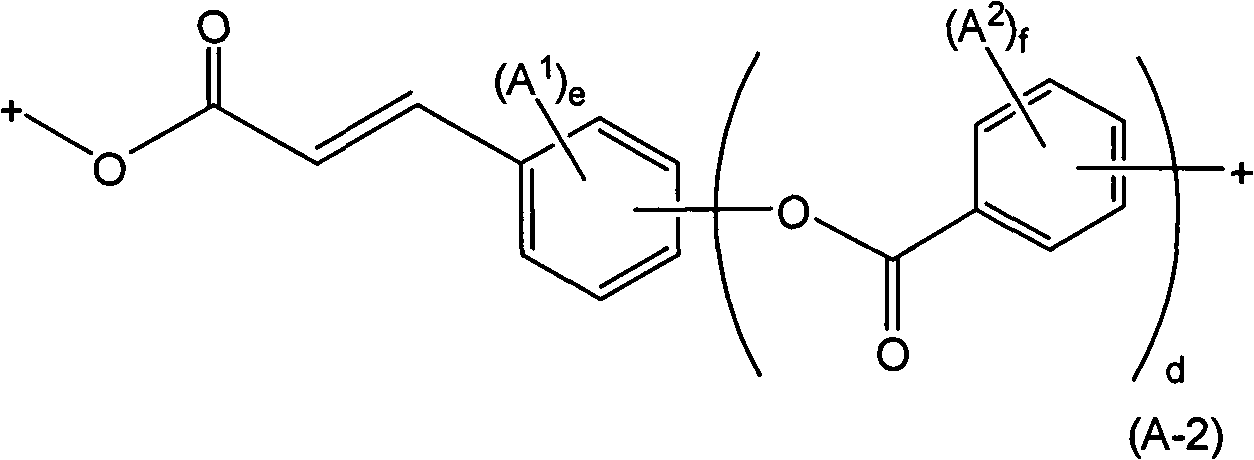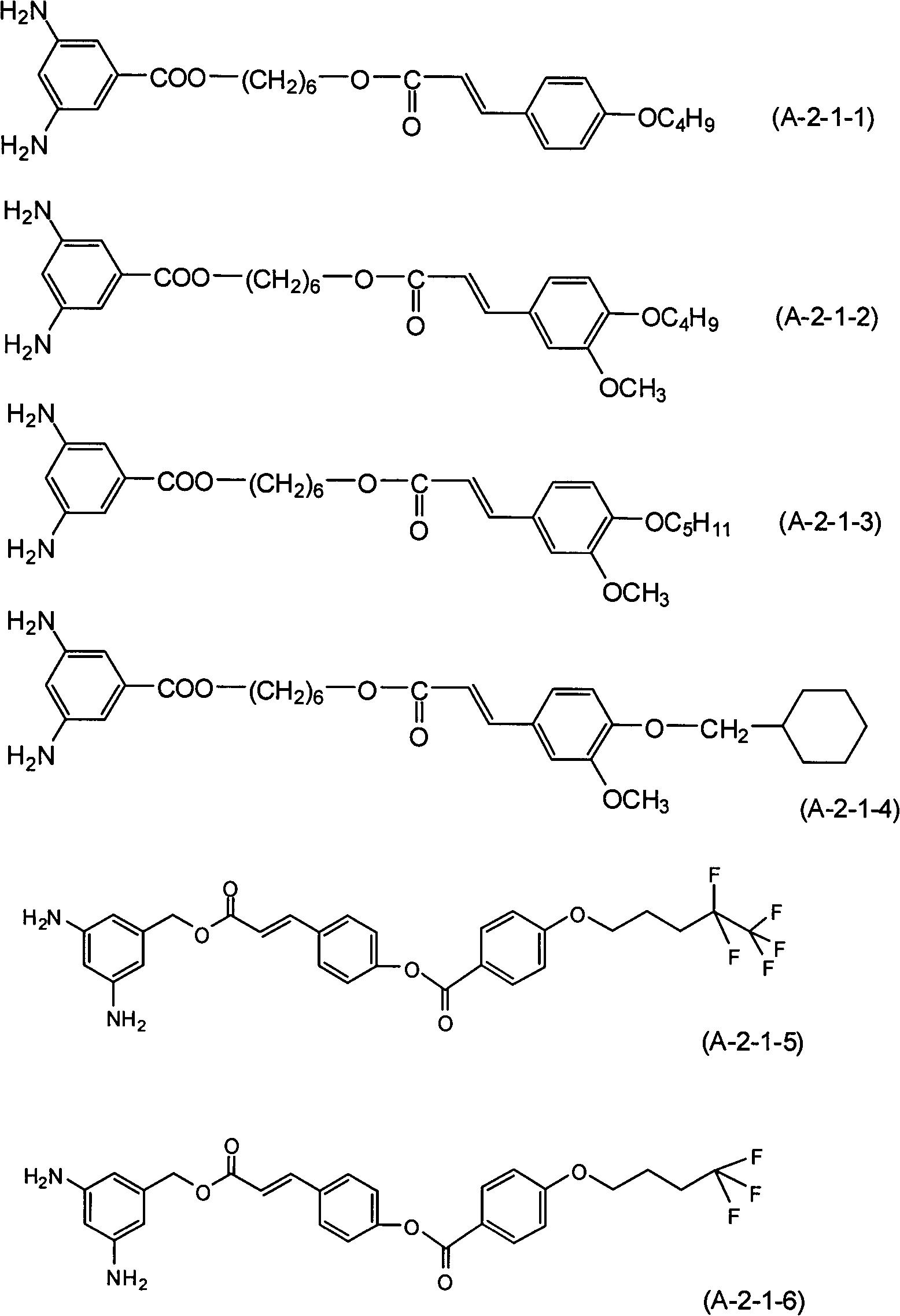Liquid crystal aligning agent, liquid crystal aligning film and liquid crystal display element
A technology of liquid crystal display elements and liquid crystal alignment agents, applied in liquid crystal materials, instruments, optics, etc., can solve problems such as uneven printing, insufficient suppression, and insufficient yield of liquid crystal alignment film products, and achieve excellent printability and performance excellent effect
- Summary
- Abstract
- Description
- Claims
- Application Information
AI Technical Summary
Problems solved by technology
Method used
Image
Examples
Embodiment
[0125] Hereafter, although an Example demonstrates this invention more concretely, this invention is not limited to these Examples.
[0126] The solution viscosity of the polymer and the imidation rate of the polyimide in the following synthesis examples were evaluated by the following methods, respectively.
[0127] [Solution Viscosity of Polymer]
[0128] The solution viscosity (mPa·s) of the polymer is a value measured at 25° C. for each polymer solution using an E-type rotational viscometer.
[0129] [Imidation rate of polyimide]
[0130] A small amount of the polyimide-containing solution obtained in each synthesis example was taken and poured into pure water, and the obtained precipitate was collected by filtration to isolate polyimide. After the polyimide was fully dried under reduced pressure at room temperature, it was dissolved in deuterated dimethyl sulfoxide, and tetramethylsilane was used as a reference, and the 1 In H-NMR, the imidation ratio was obtained from...
Synthetic example 1~31
[0136] In 135g of N-methyl-2-pyrrolidone, add diamine and tetracarboxylic dianhydride of the kind and amount shown in Table 1 successively, make it dissolve, form the total weight of diamine and tetracarboxylic dianhydride relative to the reaction The total weight of the solution was 10% by weight of the solution, and it was reacted at 60°C for 6 hours to obtain 150 g of solutions containing 10% by weight of polyamic acids (PA-1) to (PA-31). Table 1 shows the viscosities of the respective solutions obtained here together.
[0137] [Synthesis of polyimide]
Synthetic example OPA-1
[0172] 98g (0.50 mole) of 1,2,3,4-cyclobutanetetracarboxylic dianhydride and 110g (0.50 mole) of pyromellitic dianhydride were mixed with 200g (1.0 mole) of diamine as tetracarboxylic dianhydride. ) 4,4'-diaminodiphenylmethane, dissolved in a mixed solvent of 230g N-methyl-2-pyrrolidone and 2100g γ-butyrolactone, reacted for 3 hours at 40°C, and then added 1350g γ-butyrolactone to obtain a solution containing 10% by weight of polyamic acid (OPA-1). The solution viscosity of this polyamic acid solution was 125 mPa·s.
PUM
| Property | Measurement | Unit |
|---|---|---|
| viscosity | aaaaa | aaaaa |
| viscosity | aaaaa | aaaaa |
| viscosity | aaaaa | aaaaa |
Abstract
Description
Claims
Application Information
 Login to View More
Login to View More - R&D
- Intellectual Property
- Life Sciences
- Materials
- Tech Scout
- Unparalleled Data Quality
- Higher Quality Content
- 60% Fewer Hallucinations
Browse by: Latest US Patents, China's latest patents, Technical Efficacy Thesaurus, Application Domain, Technology Topic, Popular Technical Reports.
© 2025 PatSnap. All rights reserved.Legal|Privacy policy|Modern Slavery Act Transparency Statement|Sitemap|About US| Contact US: help@patsnap.com



